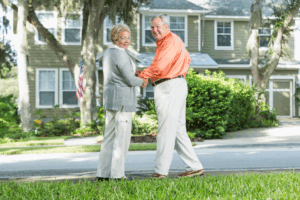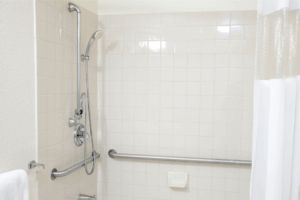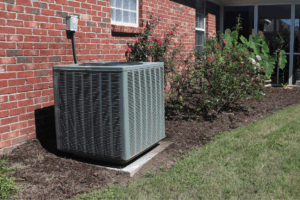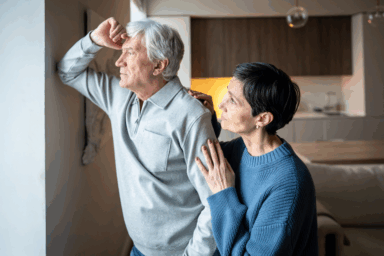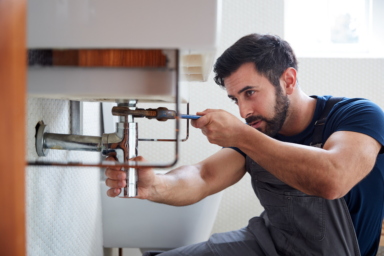
By Tyler Plack
Tyler Plack is the President of South River Mortgage. Tyler holds an active FHA Direct Endorsement (DE) underwriting certification and is the author of The Retirement Solution: Maximizing Your BenefitTyler is a seasoned entrepreneur and real estate investor renowned for his expertise in reverse mortgages and his commitment to addressing seniors' equity challenges. Tyler brings a unique perspective to his ventures, having built several successful companies throughout his career. His insights are frequently sought by industry publications, where he is recognized for his vast knowledge in the realm of reverse mortgages.
An avid investor in income-producing properties, Tyler is dedicated to helping seniors navigate their financial needs with compassion and expertise. When Tyler is not helping solve America's retirement crisis, he is a skilled pilot flying airplanes for fun.
For many retirees, staying in the home you love isn’t just a preference — it’s a deeply personal goal. Your home is where you built a life, raised a family, and made lasting memories.
But as the years pass, certain features that once felt natural — like stairs, bathtubs, and narrow doorways — can become daily challenges.
Here’s the good news: your home can adapt to you. With the right upgrades, you can make it safer, easier to navigate, and more comfortable — while preserving your independence for years to come.
Below are over 30 practical upgrades to consider. And after that, we’ll show you how a reverse mortgage can help pay for them — without draining savings or relying on family.
Mobility & Accessibility Upgrades
These upgrades make moving around the house easier and reduce physical strain.
1. Walk-In Showers
Replace a high-step bathtub with a curb less, walk-in shower to eliminate one of the biggest fall risks in the home.
2. Entryway Ramps
Smooth out tricky steps at entrances with ramps or low-slope walkways for easier access with walkers or wheelchairs.
3. Widen Doorways & Hallways
Make it easier to navigate with mobility aids by widening narrow frames — especially in older homes.
4. Lever-Style Door Handles & Faucets
Much easier for arthritic hands than twisting knobs.
5. Non-Slip Flooring
Replace slick tile or throw rugs with textured vinyl, rubber flooring, or slip-resistant tile.
6. Stair Lifts
Install a chair lift to keep using upper floors without the daily strain of stairs.
7. Small Home Elevators
A growing option for multistory homes, especially when stair lifts don’t fit the layout.
8. First Floor Living Conversions
Turn a downstairs den, office, or dining room into a bedroom to reduce stair use.
9. Lowered Countertops or Adjustable Counters
Make kitchens and workspaces usable while seated.
10. Accessible Sinks and Cabinets
Install open space under sinks for wheelchair access and add pull-down shelving in upper cabinets.
Safety & Fall Prevention Upgrades
Falls are one of the biggest risks for seniors. These upgrades keep your footing secure.
11. Grab Bars
Place them not only in showers, but also near toilets, beds, and hallways.
12. Double Stair Railings
Install railings on both sides of staircases for added support.
13. Brighter General Lighting
Dim rooms increase fall risk. Upgrade bulbs and fixtures throughout the home.
14. Motion-Sensor Night Lights
Perfect for hallways, bathrooms, and bedrooms for late-night navigation.
15. Smooth Threshold Transitions
Eliminate uneven doorway lips that can trip up walkers or feet.
16. Zero-Step Entryways
Lower your front entry or install a threshold ramp to remove step-ups entirely.
17. Water Temperature Regulators
Prevent accidental scalding by limiting max water temperature at sinks and showers.
18. Textured Outdoor Walkways
Resurface slick porches, steps, or driveways with textured, non-slip materials.
19. Handrails Along Exterior Paths
Add railings along outdoor ramps or sloped sidewalks.
Smart Home & Security Upgrades
Modern technology can make living alone safer and more convenient — without feeling “techy.”
20. Voice-Controlled Lights, Thermostats & Locks
Adjust your home hands-free.
21. Smart Doorbells with Cameras
See who’s at the door without rushing to answer.
22. Medical Alert Systems & Wearables
Quick emergency response at the press of a button (or automatically if you fall).
23. Motion Sensors & Security Cameras
Provide peace of mind and allow family to check in remotely (if you choose).
24. Automatic Shut-Off Devices for Stoves
Prevents accidents if you forget to turn something off.
25. Smart Leak Detectors
Alerts you early to plumbing leaks or flooding before damage gets expensive
Are You Eligible for a Reverse Mortgage?
(Find out in 60 seconds)
Comfort & Convenience Upgrades
These changes make daily living easier and help you maintain independence.
26. First-Floor Laundry
Move laundry machines out of the basement and onto the main floor.
27. Comfort-Height Toilets
Raised toilets make sitting and standing easier on knees and hips.
28. Pull-Out Shelves & Lazy Susans
Reduces bending and reaching in the kitchen.
29. Wall Ovens at Waist Height
Easier and safer than bending down to use a traditional oven.
30. Easy-Open Windows & Blinds
No more struggling with sticky frames or heavy curtains.
31. Upgraded HVAC & Insulation
Keeps the home comfortable year-round while reducing utility bills.
32. Generator or Battery Backup Systems
Keeps lights, medical devices, and heating running during power outages.
33. Garage Modifications
Add ramps or smooth thresholds from the garage into the home, or automatic garage openers for easier entry.
Structural & Future-Focused Upgrades
These may not be needed immediately but prepare the home for long-term living.
34. Secondary “Granny Flat” or Caregiver Suite
Convert part of the home or build a small addition to accommodate future caregivers or visiting family.
35. Bathroom Relocation
Adding a full bathroom on the main floor if one doesn’t exist already.
36. Expanded Storage Areas
Reorganize and lower storage spaces to keep essentials within reach.
37. Emergency Exits & Widened Outdoor Paths
Ensure there are multiple, easy-to-access ways out of the home in case of emergencies.
How to Pay for It All (Without Touching Savings)
Many of these upgrades are relatively affordable on their own, but together, they can add up fast:
- Walk-in shower: $8,000–$15,000
- Stair lift: $3,000–$8,000
- Ramp installation: $2,000–$10,000
- Widening doorways: $800–$2,500 per doorway
- Smart home features: a few hundred to a few thousand depending on setup!
Not everyone has that kind of cash lying around. And many retirees understandably don’t want to ask their kids to pay for renovations.
That’s where a reverse mortgage can make the difference.
How a Reverse Mortgage Can Fund Your Home Upgrades
A reverse mortgage lets homeowners 62 and older access part of their home’s equity — without selling or taking on monthly mortgage payments. You remain in your home, keep the title, and receive the funds as a lump sum, monthly payments, or a line of credit.
This is an increasingly popular way to fund aging-in-place upgrades because:
- You can cover renovation costs without touching savings.
- There are no monthly mortgage payments, so you don’t add financial stress.
- You decide how to use the funds — whether for a big project or smaller upgrades over time.
- It preserves your financial independence, so you don’t have to rely on family or expensive personal loans.
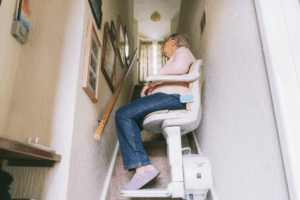
For Example…
Joan, 78, wanted to stay in her two-story home but was worried about the stairs and her outdated bathroom.
She used a reverse mortgage to install a stair lift, convert her bathtub into a walk-in shower, widen doorways, and add smart lighting.
She completed everything in just a few months — without asking her children for help or touching her retirement savings.
Today, she moves around her house confidently and plans to stay there for many years to come.
Take Control of Your Future
Aging in place doesn’t mean “making do.” It means adapting your home so it supports the life you want to live.
Whether it’s a handful of small improvements or a major accessibility renovation, these upgrades help you stay independent, comfortable, and safe.
And with a reverse mortgage, you can make those changes happen — on your own terms.
To find out more, click the link below to find out how much you could qualify for:
